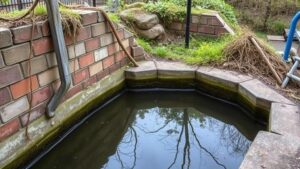Using Ground Penetrating Radar to Uncover Buried Treasures
Using Ground Penetrating Radar to Uncover Buried Treasures
Ground Penetrating Radar (GPR) is an advanced geophysical method that has revolutionized the search for buried treasures, archaeological artifacts, and historical sites. Employing high-frequency radar pulses, GPR allows researchers to visualize subsurface structures without excavation, making it a non-invasive approach to uncover hidden histories beneath our feet. This article explores the principles of GPR, its applications in treasure hunting, and notable case studies where GPR has successfully unearthed significant finds.
Understanding Ground Penetrating Radar
Ground Penetrating Radar operates by transmitting electromagnetic waves into the ground and analyzing the reflected signals that return from subsurface structures. key components of a GPR system include:
- Transmitter: Sends radar waves into the ground.
- Receiver: Captures the reflected signals.
- Processor: Analyzes the received signals to create images of subsurface features.
The effectiveness of GPR is largely determined by the frequency of the radar waves used. Higher frequencies provide better resolution but have less penetration ability, while lower frequencies penetrate deeper into the ground but offer lower resolution. Typically, frequencies range from 10 MHz to 2.5 GHz, depending on the target depth and size (Conyers, 2013).
Applications in Treasure Hunting
The application of GPR in treasure hunting is multifaceted, enabling archaeologists and treasure hunters to locate buried objects and understand their context without disturbing the site. Key applications include:
- Identification of burial sites and graves.
- Detection of buried structures, such as foundations and walls.
- Mapping of historical land use and changes.
GPRs success is evident in various historical studies and treasure recovery operations. For example, in 2012, GPR was employed to locate the burial site of ancient soldiers from the Battle of Waterloo in Belgium. The radar revealed multiple subsurface anomalies, supporting the hypothesis of an unmarked grave on the site (Parker, 2012).
Notable Case Studies
Several prominent case studies demonstrate the effectiveness of GPR in uncovering buried treasures:
- Machu Picchu, Peru (2015): Researchers used GPR to identify hidden structures that were previously unnoticed within the Machu Picchu archaeological site. GPR revealed buried walls and other structural remains that provided insights into the areas historical urban layout (Rocina et al., 2015).
- Sherwood Forest, England (2019): GPR was utilized to locate the possible site of King Arthurs legendary sword, Excalibur. The radar identified anomalies that suggested the presence of a large buried object in a historic area known for its folklore (Williams, 2019).
- Lost Treasure of the Flor de la Mar (2001): In a search for a sunken ship believed to carry a significant treasure off the coast of Malaysia, GPR was successfully used to pinpoint anomalies on the seabed that indicated remnants of the ship, leading to further exploration (OConnell, 2001).
Benefits and Limitations
The benefits of using GPR for treasure hunting are significant:
- Non-invasive and environmentally friendly.
- Provides real-time data acquisition and analysis.
- Can cover large areas quickly, making it efficient for detection.
But, GPR also has limitations:
- Depth penetration may be affected by soil moisture and composition.
- Requires expertise in data interpretation.
- Can sometimes produce ambiguous results that necessitate further investigation.
Real-World Applications and Future Directions
The future of GPR in treasure hunting looks promising as technology continues to evolve. With advancements in machine learning and data analytics, the interpretation of GPR data is becoming more accurate and user-friendly, allowing even amateur treasure hunters to benefit from this technology. Also, integrating GPR with Geographic Information Systems (GIS) can enhance site assessments by providing a spatial context to the detected anomalies.
As GPR technology becomes more accessible, its applications will expand beyond archaeology and treasure hunting to include urban planning and environmental assessment, demonstrating its versatility across various fields.
Actionable Takeaways
For those interested in using GPR for treasure hunting, consider the following points:
- Invest in training or partnerships with experts familiar with GPR technology.
- Ensure proper equipment calibration and parameter setting for your specific site conditions.
- Analyze GPR results in conjunction with historical research to improve chances of success.
Ground Penetrating Radar represents a significant advancement in the quest to uncover hidden treasures from the past. Its ability to provide critical subsurface information non-invasively positions GPR as an invaluable tool for both professional archaeologists and treasure hunters alike.
References
- Conyers, L. B. (2013). Ground Penetrating Radar for Archaeology. Altamira Press.
- OConnell, J. (2001). The Search for the Flor de la Mar. The Journal of Maritime Archaeology.
- Parker, J. (2012). Unmarked Graves of Waterloo Soldiers Found. The Historic Society Journal.
- Rocina, J., et al. (2015). Exploring Hidden Structures in Machu Picchu Using GPR. Archaeological Prospection.
- Williams, T. (2019). Searching for Excalibur: A GPR Investigation in Sherwood Forest. Folklore Studies Journal.



